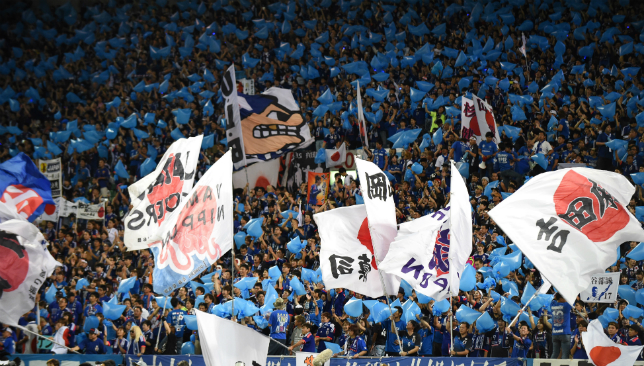
The international break usually elicits groans from many football fans who consider it an unwelcome distraction from club football, but Copa90‘s series on international football fans across the world is showing just how much fans love seeing their national team play.
Their latest installment took them to a surprise destination: Japan.
Most people wouldn’t associate the Far East giants with the culture of football ultras, but there they are, turning out to support the Samurai Blue with the passion to match ultras all around the world.
Yet the vociferous support are a relatively new phenomenon. Less than 30 years ago, Japan’s national football team, and the country’s entire football culture, was in the doldrums.
They would struggle to arrange friendlies with countries like Malaysia, let alone mix it up with the big boys in Asia. Football in general lagged far behind baseball, Japan’s biggest sport.
1993 is the year that began to change. First, American coach Tom Byer introduced his technical skills teaching program across Japan, to great fanfare, helping raise the profile of the game and leading to a generation of technically skilled football players.
That same year, Japan bid to host the 2002 World Cup, one they would win along with South Korea. And the J-League started in 1993, which slowly created a fan culture based solely on city and regional pride – which would later translate to national pride.
There were setbacks, such as Japan failing to qualify for the 1994 World Cup in the USA in heartbreaking fashion. But making it the next time around, in France 1998, gave Japanese football another fillip, which was followed by the great success of the 2002 tournament, when the sport took over the country.
Now, of course, the country is one of Asia’s footballing powerhouses, and the fans reflect that. Ultras Nippon grew into a veritable fan army, one that has influenced fan cultures elsewhere in Asia, and football has connected the various subcultures in Japan, from photography to fashion.
Most notable is how female fans have taken to the sport, showing that crazy football fandom is not just a man’s game.
Watch the video above to see the journey of Japanese football and the country’s ultras.